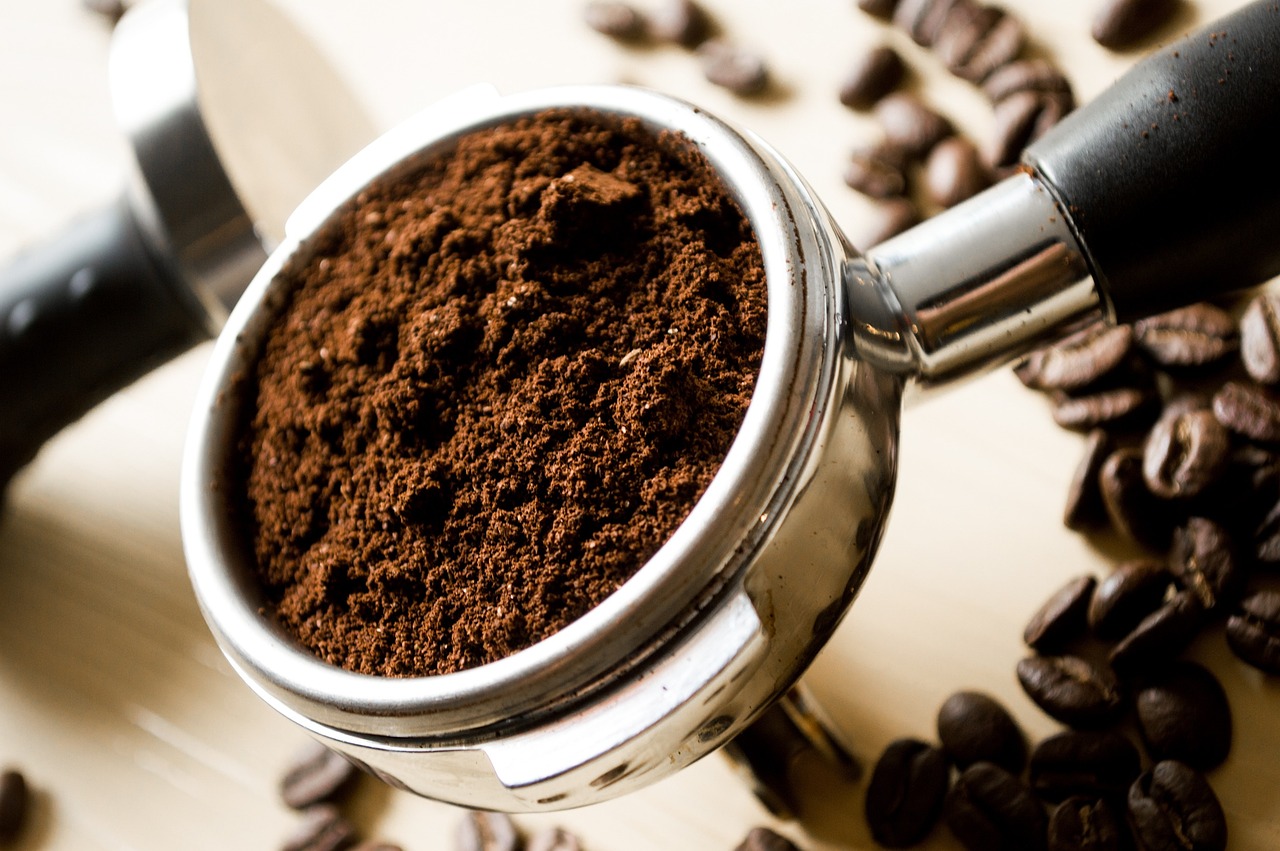
May arabica coffee (KCK25) is down -10.90 (-2.83%), and March ICE robusta coffee (RMH25) is down -170 (-3.06%).
Coffee prices today are sharply lower on concern about consumer spending after today's sharp -7.0 point drop in the Feb US consumer confidence index to an 8-month low of 98.3. Also, arabica coffee prices today fell to a new 3-week low and saw continued long liquidation pressure after the rally seen from late-January through early-February.
Arabica coffee prices were undercut over the last several sessions as ICE-monitored arabica inventories rebounded higher to 792,695 bags on Monday from last Tuesday's 9-month low of 758,514 bags.
Meanwhile, ICE-monitored robusta coffee inventories posted a 4-3/4 month high on January 31 of 4,603 lots but then fell to a 1-3/4 month low of 4,297 lots on February 18. Robusta inventories were at 4,321 lots on Monday.
Below-normal rain in Brazil supported coffee prices after Somar Meteorologia reported Monday that Brazil's biggest arabica coffee growing area of Minas Gerais received 11.4 mm of rain last week, or 24% of the historical average. Brazil is the world's biggest arabica coffee growing country.
In a bullish factor, an increased percentage of Brazil's coffee harvest has already been sold compared with previous years, meaning there is less supply still available to sell. Safras & Mercado reported last Monday that producers sold 88% of Brazil's 2024/25 coffee harvest as of February 11, faster than last year's comparable year-earlier figure of 79% and the 5-year average of 82%. Meanwhile, sales of the 2025/26 crop have been slow at 13% of the crop, well behind the 4-year average of 22%, which suggests a lack of new supply and an unwillingness of producers to sell.
Continued supply fears have supported coffee prices. Cecafe reported on February 12 that Brazil's January green coffee exports fell -1.6% y/y to 3.98 million bags. Also, on January 28, Conab, Brazil's government crop forecasting agency, forecasted that Brazil's 2025/26 coffee crop would fall -4.4% y/y to a 3-year low of 51.81 million bags. Conab also cut its 2024 Brazil coffee crop estimate by -1.1% to 54.2 million bags from a September estimate of 54.8 million bags.
The impact of dry El Nino weather last year may lead to longer-term coffee crop damage in South and Central America. Rainfall in Brazil has consistently been below average since last April, damaging coffee trees during the all-important flowering stage and reducing the prospects for Brazil's 2025/26 arabica coffee crop. Brazil has been facing the driest weather since 1981, according to the natural disaster monitoring center Cemaden. Also, Colombia, the world's second-largest arabica producer, is slowly recovering from the El Nino-spurred drought last year.
Robusta coffee prices are underpinned by reduced robusta production. Due to drought, Vietnam's coffee production in the 2023/24 crop year dropped by -20% to 1.472 MMT, the smallest crop in four years. The USDA FAS on May 31 projected that Vietnam's robusta coffee production in the new marketing year of 2024/25 will dip slightly to 27.9 million bags from 28 million bags in the 2023/24 season. In addition, Vietnam's General Statistics Office reported on January 10 that 2024 Vietnam coffee exports fell -17.1% y/y to 1.35 MMT. Conversely, the Vietnam Coffee and Cocoa Association on December 3 raised its 2024/25 Vietnam coffee production estimate to 28 million bags from an October estimate of 27 million bags.
News of larger global coffee exports is bearish for prices. Conab reported on February 4 that Brazil's 2024 coffee exports rose +28.8% y/y to a record 50.5 million bags. Also, Vietnam's General Statistics Office reported on February 6 that Vietnam's Jan coffee exports rose +6.3% m/m to 134,000 MT. Vietnam is the world's largest producer of robusta coffee. However, ICO reported on February 6 that Dec global coffee exports fell -12.4% y/y to 10.73 million bags, and Oct-Dec global coffee exports fell -0.8% y/y to 32.25 million bags.
The USDA's biannual report on December 18 was mixed for coffee prices. The USDA's Foreign Agriculture Service (FAS) projected that world coffee production in 2024/25 will increase +4.0% y/y to 174.855 million bags, with a +1.5% increase in arabica production to 97.845 million bags and a +7.5% increase in robusta production to 77.01 million bags. The USDA's FAS forecasts that 2024/25 ending stocks will fall by -6.6% to a 25-year low of 20.867 million bags from 22.347 million bags in 2023/24. Separately, the USDA's FAS on November 22 projected Brazil's 2024/25 coffee production at 66.4 MMT, below its previous forecast of 69.9 MMT. The USDA's FAS projects Brazil's coffee inventories at 1.2 million bags at the end of the 2024/25 season in June, down -26% y/y.
For the 2025/26 marketing year, Volcafe on December 17 cut its 2025/26 Brazil arabica coffee production estimate to 34.4 million bags, down by about 11 million bags from a September estimate after a crop tour revealed the severity of an extended drought in Brazil. Volcafe projects a global 2025/26 arabica coffee deficit of -8.5 million bags, wider than the -5.5 million bag deficit for 2024/25 and the fifth consecutive year of deficits.
On the date of publication, Rich Asplund did not have (either directly or indirectly) positions in any of the securities mentioned in this article. All information and data in this article is solely for informational purposes. For more information please view the Barchart Disclosure Policy here.






